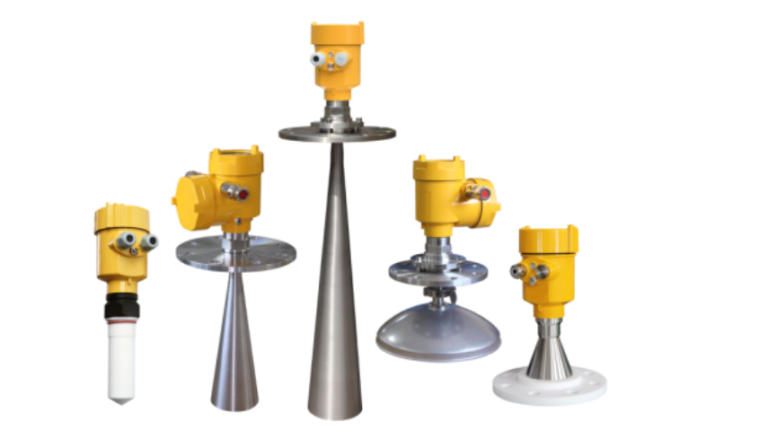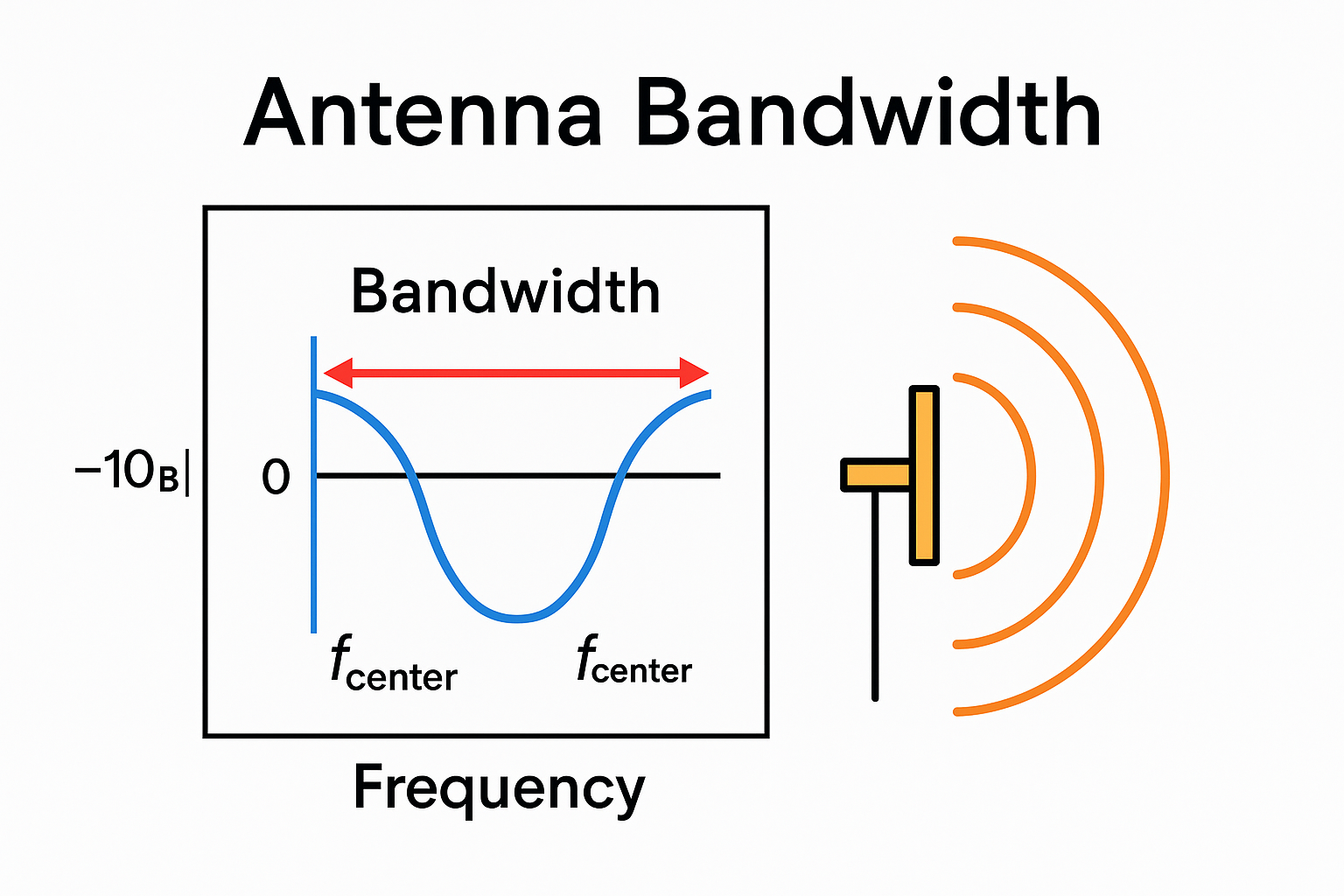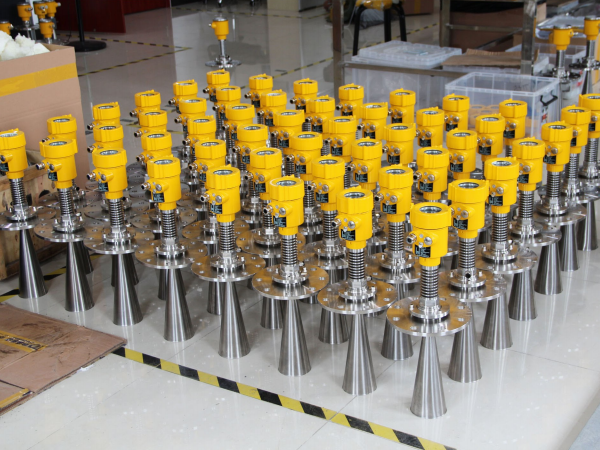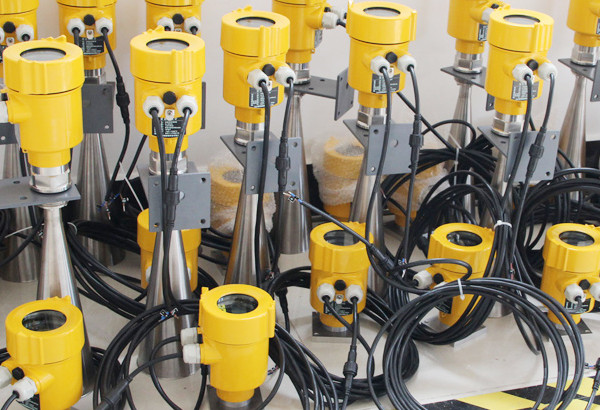Pulse Radar, Guided Wave Radar (GWR), and Frequency-Modulated Continuous Wave (FMCW)
Introduction
Radar level measurement technologies have evolved significantly over recent decades, offering diverse solutions for liquid and solid level monitoring in industrial environments. This document provides a comprehensive comparison of three mainstream radar level technologies—Pulse Radar (P-Radar), Guided Wave Radar (GWR), and Frequency-Modulated Continuous Wave (FMCW)—to help engineers and procurement specialists make informed decisions based on application requirements.
1. Operating Principles
Pulse Radar (P-Radar): Emits short microwave pulses and measures the time it takes for the signal to reflect off the surface back to the sensor. Distance is calculated based on the time of flight.
Analogy: Like throwing a stone into a well and listening for the echo.Guided Wave Radar (GWR): Transmits electromagnetic pulses along a probe (rod or cable). When the pulse encounters a material with a different dielectric constant, part of the energy is reflected back.
Analogy: Like sending a ripple along a rope and observing the reflection from a knot.FMCW Radar: Continuously transmits a frequency-swept signal. The frequency difference between the transmitted and received signal determines the distance.
Analogy: Similar to singing a rising scale and measuring the time delay in the echo.

2. Key Specifications Overview
| Technology | Frequency | Resolution | Range | Beam Angle | Suitable Applications |
|---|---|---|---|---|---|
| Pulse Radar (P-Radar) | 5.8 / 6.3 / 26 GHz | 10–30 mm | Up to 70 m | ~30° (5.8 GHz) | Standard tanks with clean liquids, budget-sensitive projects |
| Guided Wave Radar (GWR) | 0.5–2 GHz | 15 mm | Up to 35 m | N/A (guided) | Viscous liquids, low dielectric materials, complex tank internals |
| FMCW Radar | 10 / 24 / 80 GHz | 0.5–3 mm | Up to 120 m | ~3° (80 GHz) | High-precision measurement, small nozzle installation, sanitary applications |

3. In-Depth Analysis: Advantages & Limitations
Pulse Radar (P-Radar):
Advantages:
Simple circuitry and cost-effective.
Supports two-wire 24VDC operation and HART configuration.
Limitations:
Wide beam angle (5.8 GHz ≈ 30°) prone to false echoes from tank walls or ladders.
Signal attenuation in foam, condensation, or deposits on tank walls.
Guided Wave Radar (GWR):
Advantages:
Excellent signal integrity due to guided propagation.
Suitable for low dielectric constants (e.g., butane εr = 1.4).
Minimal sensitivity to tank obstructions.
Limitations:
Probe contact with medium risks corrosion or fouling.
Requires thicker cables and weights for viscous media.
Sanitary applications demand PFA full-coating, increasing cost.
FMCW Radar:
Advantages:
Ultra-high resolution (millimeter-level accuracy).
Can measure both level and interface (e.g., oil/water separation).
Narrow beam angle (80 GHz ≈ 3°) ideal for small nozzles and congested tanks.
Limitations:
Higher cost due to advanced high-frequency components and FPGA processing.
Sensitive to mounting alignment (requires ≤2° tilt or software compensation).
Electromagnetic interference requires frequency hopping.

4. Application Selection Guide
Tank height <8 m & viscous/low dielectric media: → Guided Wave Radar (GWR)
Tank height >8 m & clean liquids with budget constraints: → Pulse Radar (26 GHz)
Precision ±1 mm, high pressure (up to 40 MPa), or high temperature (up to 250°C): → FMCW Radar (80 GHz)
Sanitary applications (CIP/SIP): → Sanitary GWR (PFA-coated) or 80 GHz FMCW with flush-mounted antenna
5. Installation Recommendations
Top Mounting: Keep antenna ≥0.5D away from tank walls (D = antenna diameter); avoid placing near inlets within 0.5 m.
Side Mounting with Bypass Tube: Minimum inner diameter ≥40 mm; ensure smooth openings to prevent material buildup.
Hazardous Areas:
Intrinsically safe (Ex ia IIC T6) for Zone 0.
Flameproof (Ex d IIC T6) for Zone 1.
FMCW devices require barrier isolation.
Communication Protocols: HART 7, Modbus-RTU, PROFINET, or FOUNDATION Fieldbus (as per application).

Conclusion
“For small tanks with sticky media, choose GWR; for large clean tanks on a budget, use Pulse Radar; and for millimeter-level precision, FMCW is unmatched.”
